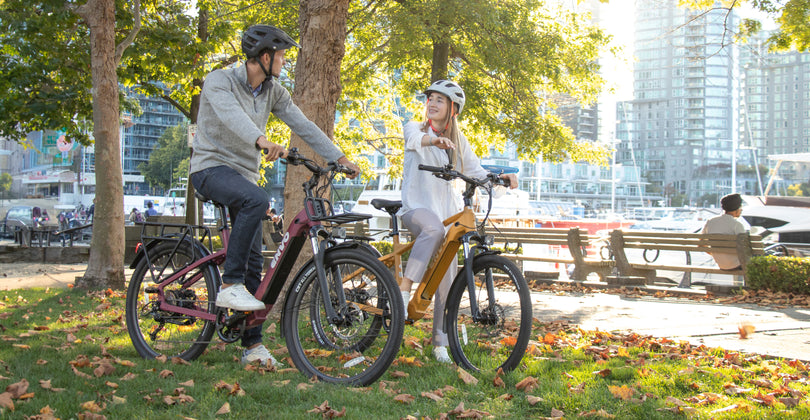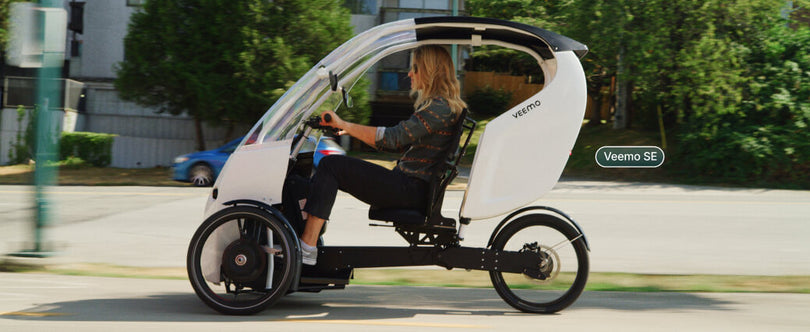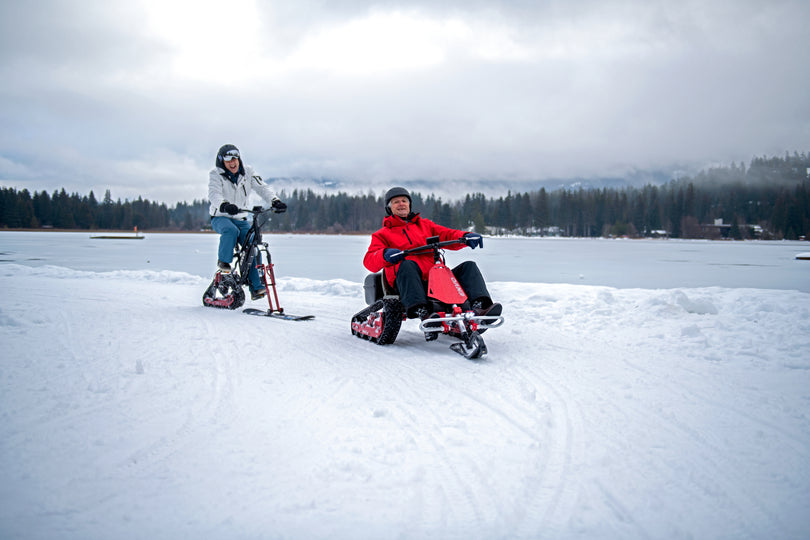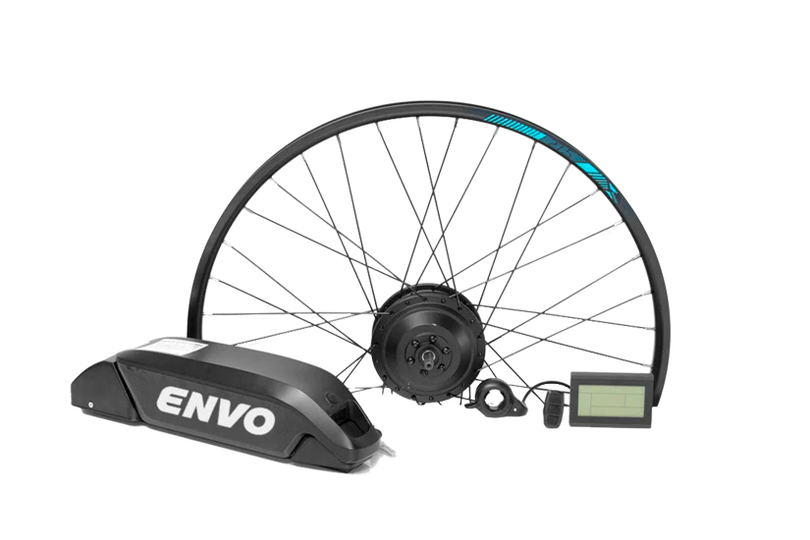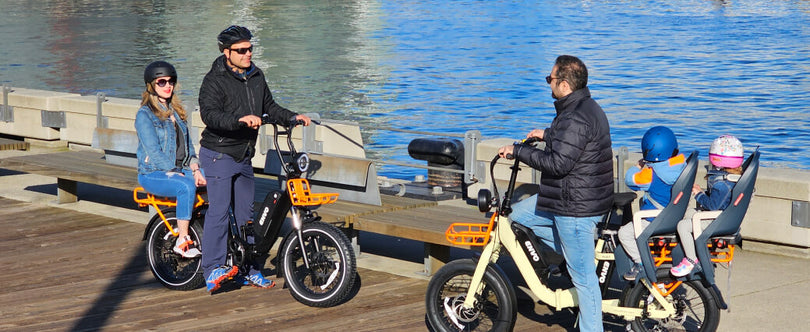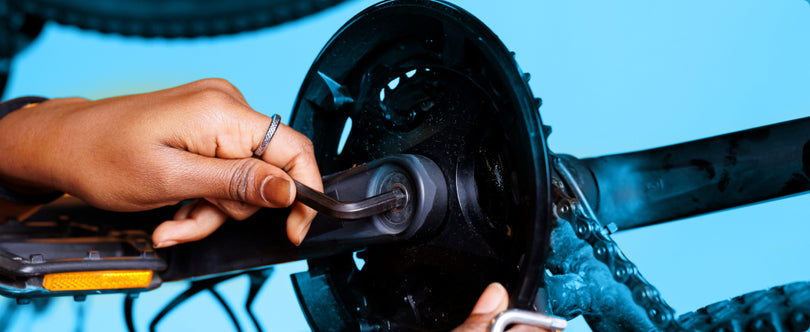Why stick to 350W – 500W once others offer 1000W, 3000W, or 6000W electric bike systems?
Besides by-law limitations for street legal maximum 500W power, there are many engineering and safety reasons behind sizing a motor power on a bicycle– no matter if this is a factory made bicycle or a retrofit conversion project.
- 3000W, 1500W, 1000W, 750W motors are not street legal and are too powerful and heavy for bicycles. Typically we offer high power motor system for students or R&D projects, not electric bicycle applications. Putting a 4L engine on a Toyota Matrix is just a waste of money and resources. This engine will break the transmission shortly and the car does not provide a satisfactory drivability on small wheelbase and small tires.
- 250-500W is the optimum power you can expect a reasonable weight, speed, range, durability and safety on a bicycle. Knowing that an aerobic pedaling power by a regular cyclist is between 70W to 200W helps us understand 500W is like 5 people pedaling power.
You may read or see exciting reports or videos about 1000W to 6000W electric bikes, however this will not last long on those bikes. Biggest motor is not always the best.
How do I decide between buying an electric bike or a conversion kit?
Buy the electric bike if:
- you have found the right fit with a reasonable price..
Get the conversion kit if:
- You already have a sound bicycle (might as well save some garage space)
- You want to save on the price of the bicycle as well as
With the conversion kit, you can set it up yourself or see a bike mechanic for extra support.
Is it hard to ride the bike when the battery is empty?
When the battery is dead you will have a regular bike only having 5 to 7 kg more cargo with you. There is no drag or friction by EbikeBC geared hub motor system.
Can I use the ebike in the rain and snow?
The system is rain proof. It’s good for rain or snow, however we advise against water jetting. Most importantly, do not park in the rain or snow.
Can I put my eBike on a car rack?
Yes. Our products typically add 6-7Kg (13-16 lbs) to the weight of a bike. You also have the option to remove the battery, eliminating 3-4kg of the weight, when putting your electric bike on a car rack.
Will your e-bikes run without pedaling by use of throttle?
For most versions, yes. Please check products specification.
Should I completely drain the battery before charging?
Not at all! Unlike traditional Nickel based batteries, Li-Ion battery has no historic effect on charge and topping up the battery after each use gives a better life condition.
How long does it take to recharge the battery?
Approx 4-7 hours depending on the battery capacity using standard chargers. We may offer quick chargers which doubles the speed of charge.
Does the electric bike recharge by pedaling?
No, it is not possible to recharge the ebike by pedalling yet.
The reason is because regeneration demands heavy push to pedal, which is exhausting. Regeneration only makes sense when you use the kinetic energy of a bike in breaking or descending a downhill, which at best it can increase the range by 10%. The idea of regenerative braking doesn’t work well on bikes because unlike cars the mass/aerodynamic loss ratio is too small.
What maintenance is required for electric bikes?
Usually there is no scheduled maintenance requirement for e-bikes other than simple physical protections and keeping batteries fully charged after each use.
How costly is a replacement battery?
The Li-Ion battery is quite costly. The number of cells in a typical ebike battery is 40-50 units; almost 10 times more than a laptop or 50 times of an Iphone with similar quality and specs. Battery is almost half of the cost of a conversion kit or 1/3 of an average complete electric bike.
How long does the battery last before it needs to be replaced?
We offer Li-Ion battery packs which are well engineered and protected with BMS (Battery Management System) for longest possible life. The cells used in our battery packs are A-grade LG, Samsung or Panasonic branded cells which have strict quality control and maintain their quality and performance for long. The technology and quality of cells are similar to what Tesla is using for their cars. There is a calendar life as well as cyclic life on the battery cells which is about 6 years and 800 full charge/discharge cycles. If using daily, you can expect about 20000-30000Km before the battery capacity shrinks to less than 50% which we consider as dead.
How far can I go on a single battery charge?
The range depends on many factors such as weight, road conditions, bicycle, weather, level of assist, and amount of muscle power being used. In general our system:
- Maintain 30km average range
- Minimum compatible battery capacity is over 100km range (if used on level 1 assist)
You will be guided through the right battery capacity for your particular case if you inquire.
What are the running costs of electric bikes?
- Our motor/controller system is maintenance free.
- Batteries have approx. 80$/Year depreciation on average.
Average power consumption is about 1KWh/100km, taking 1KWh 10cents then the power cost of 100km will be about 10 cents!
Who uses electric bikes?
Electric assist bicycles (ebikes) are meant to enhance a range of performances on regular bikes without destroying the spirit of conventional human powered and clean riding. Ebikes are for those:
- Looking to travel quicker and further on their bike
- Ride their bikes more frequently without physical stress
Our ebikes can also potentially be used as a fully powered vehicle, motorized in the absence of pedalling, for those who have certain health conditions that may make pedalling difficult. Age restrictions depend on each province.
How fast can electric bikes go?
We have ebikes capable of 57km/h, however the legal max speed setting to be on the street is at 32km/h. The controller will cut-off assist beyond 32km/h to comply with the law. 350W systems gives the maximum street legal performance on ebikes, however 500W gives a better performance on hills.
Do I need a license to ride an electric bike on the road?
Vehicle licenses and liability insurance are not required in the US and Canada, including the street legal ebikes and conversion kits offered by EBikeBC.
What do the regulations say about using electric bikes?
General electric bicycle’s regulations in North America state that e-bikes:
- Are limited to 500 W output (in some areas it varies 750W and 1000W)
- Cannot travel faster than 32 km/h (20 mph) on motor power alone on level ground.
- Require an approved helmet.
Generally, they are considered vehicles (like motorcycles and pedal cycles), and are subject to the same rules of the road as regular bicycles as a result. Regulations may or may not require an interlock to prevent the use of power when the rider is not pedaling.
The vehicle must be equipped with a mechanism that either:
- Allows the driver to turn the motor on and off, or
- prevent the motor from turning on or engaging before the MAC attains a speed of 3 km/h
The motor must disengage when the operator:
- stop pedaling, or
- release the accelerator or
- apply a brake.
- The motor cannot be gas-powered.
The motor must be capable of being propelled by muscular power using the pedals, but it is not necessary to always pedal
The vehicle must meet any other conditions in the Motor Assisted Cycle Regulation (B.C. Reg 151/2002).
Electric bike regulations vary in different provinces or states. As an example in BC, to qualify as a Motor Assisted Cycle, certain conditions must be met such as:
- Electric motor must be 500 watts or less
- Be capable of propelling the cycle no faster than 32 km/h on level ground without pedaling.
Search for your local e-bike regulations.Our offered e-bikes and conversion kits can be set and customized based on various regulation constraints and it is the customer’s responsibility to maintain it street legal for the area they are using.

